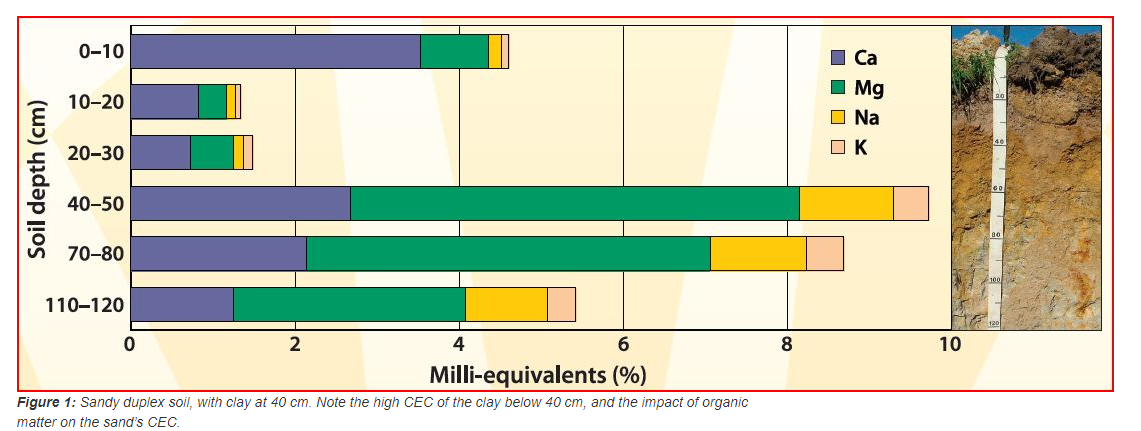Base Saturation is an Indication of Soil Fertility
BS is considered to be closely related to soil fertility, the ease with which adsorbed cations are released to plants depends on base saturation.
Percent base saturation (BS) is the percentage of the CEC occupied by the basic cations Calcium, Magnesium and Potassium. Basic cations are distinguished from the acid cations like Hydrogen and Aluminium. At an approximate soil pH 5.4 or less, Aluminium is present in a significantly high concentration that hinders growth of most plant species, and the lower the soil pH, the greater the amount of toxic Aluminium.
Therefore, soils with a high percent base saturation are generally more fertile because:
1. They have little or no acid cation Aluminium that is toxic to plant growth.
2. Soils with high percent base saturation have a higher pH; therefore, they are more buffered against acid cations from plant roots and soil processes that acidify the soil (nitrification, acid rain, etc.).
3. They contain greater amounts of the essential plant nutrient cations Potassium, Calcium and Magnesium for use by plants.

Optimal Base Saturation
William Albrecht, the Chairman of the Department of Soils at the University of Missouri, investigated cation ratios and the growth of legumes in the 1930’s.
When Albrecht researched cattle nutrition and observed that certain pastures seemed conducive to good health, he came to the conclusion that the ideal balance of cations in the soil was Calcium 60 to 75%; Magnesium 10 to 20%; Potassium 2 to 5%; Sodium 0.5 to 5.0%; and other cations 5%.

Base Saturation % Increases with Higher pH
A positive correlation exists between base saturation and soil pH.
Arid region soils are usually higher in in base saturation percentage than soils in humid regions.

